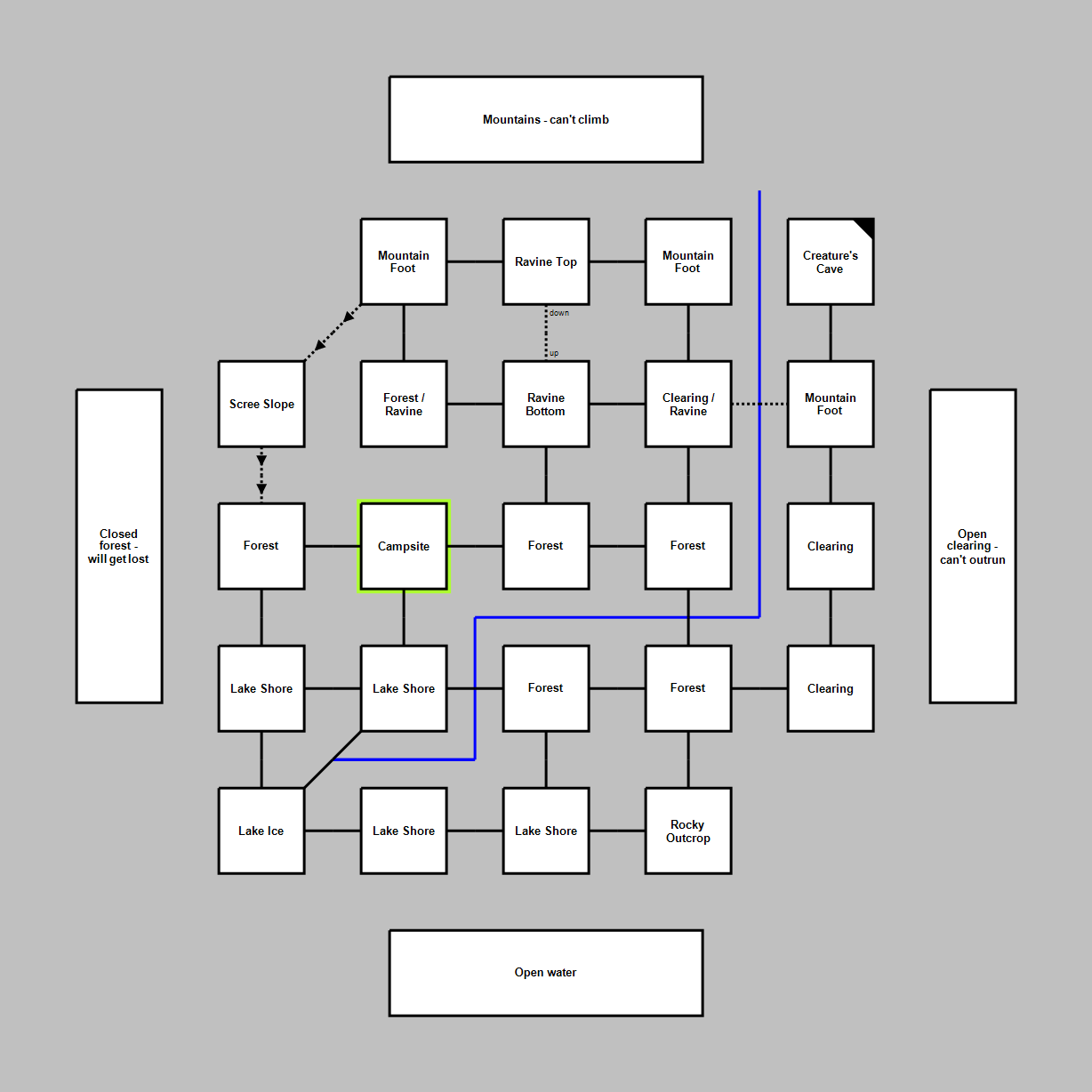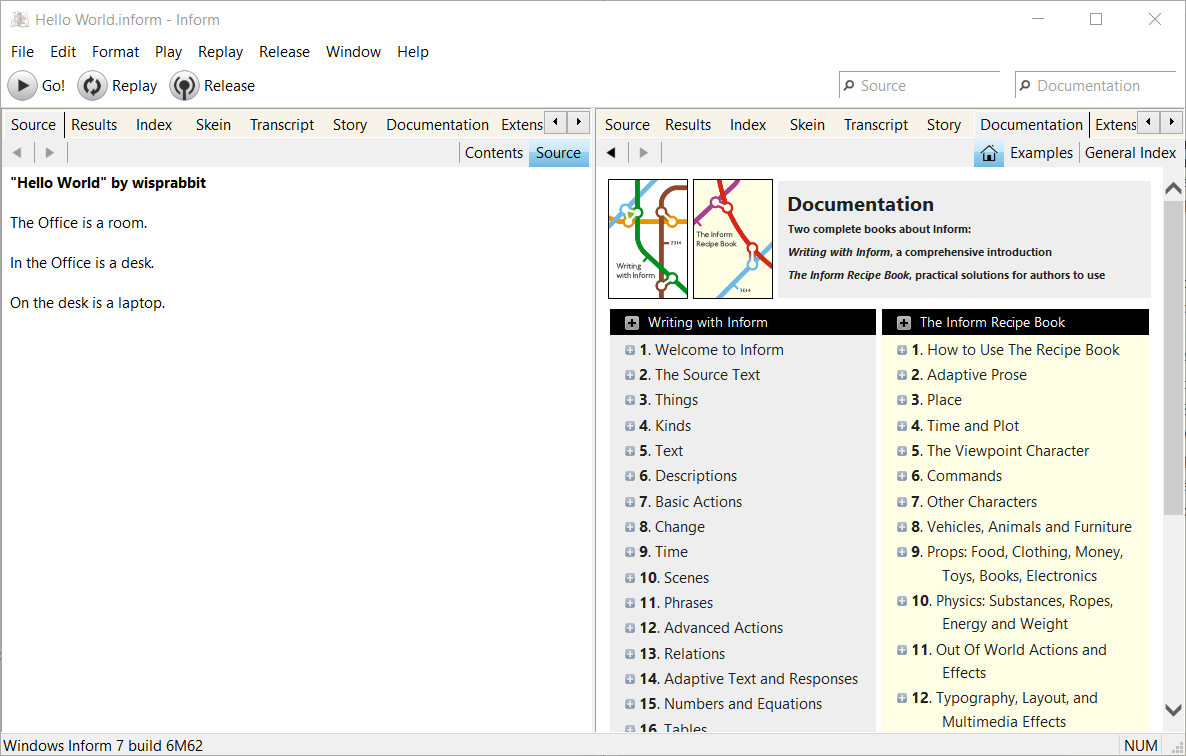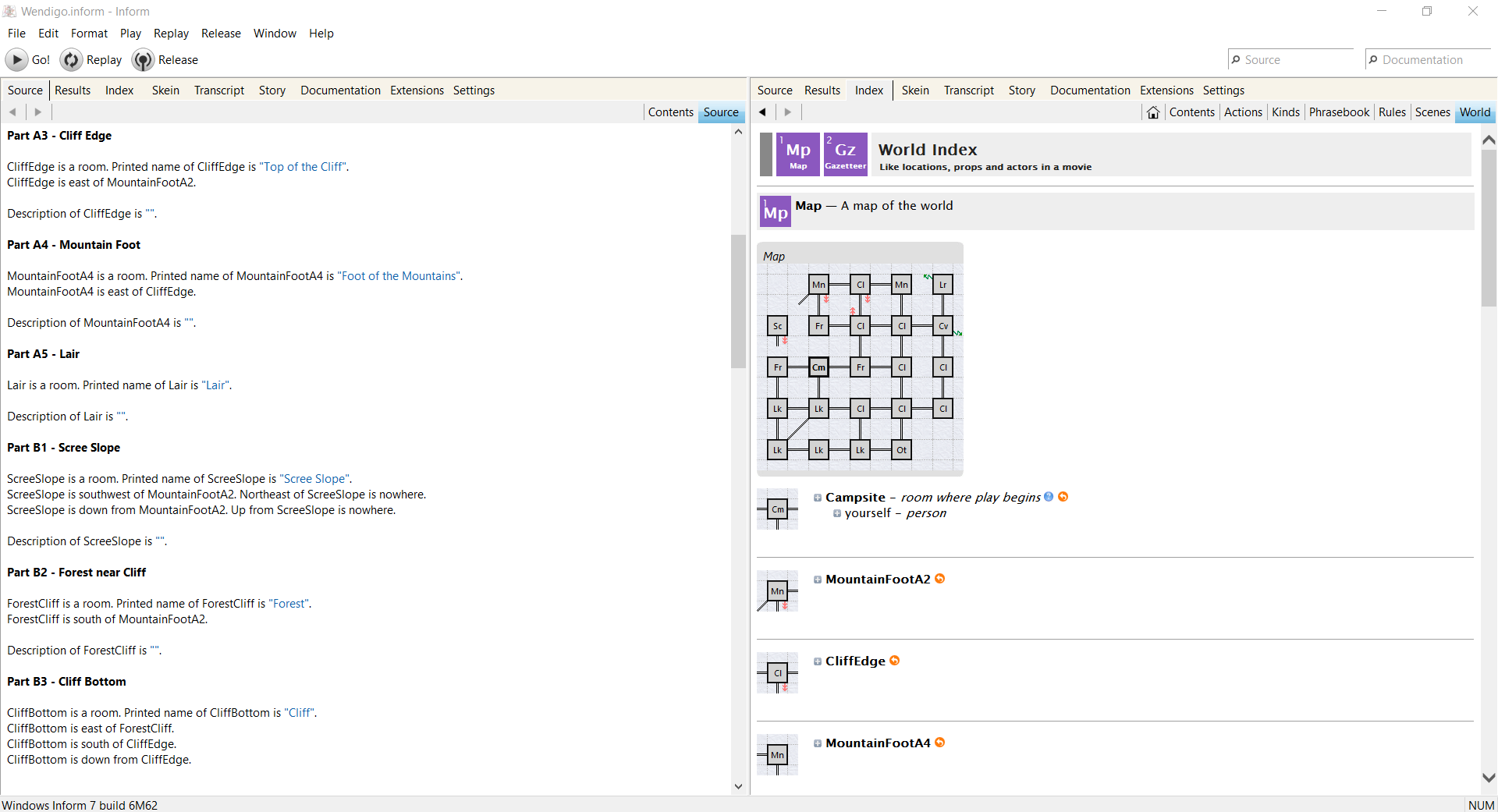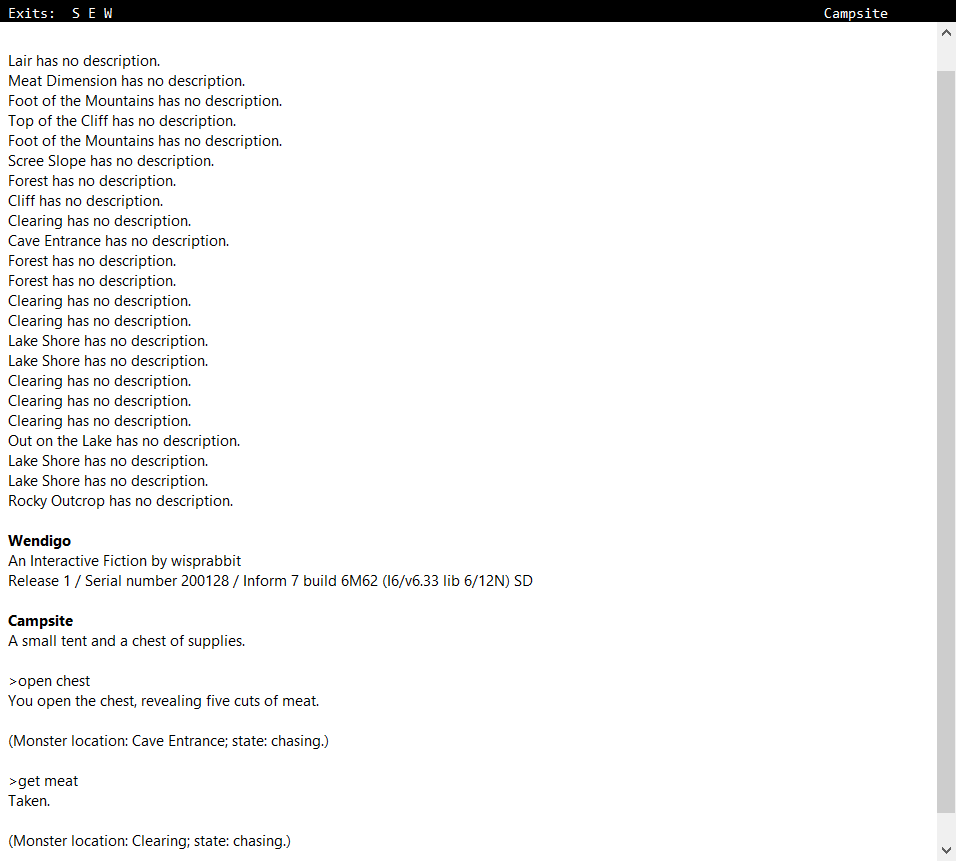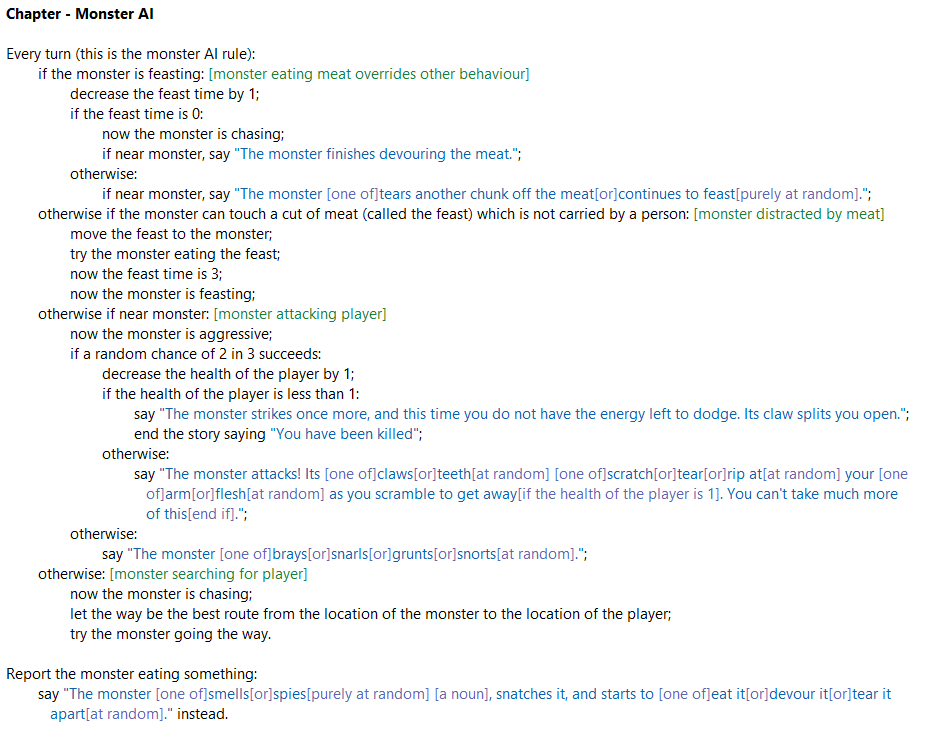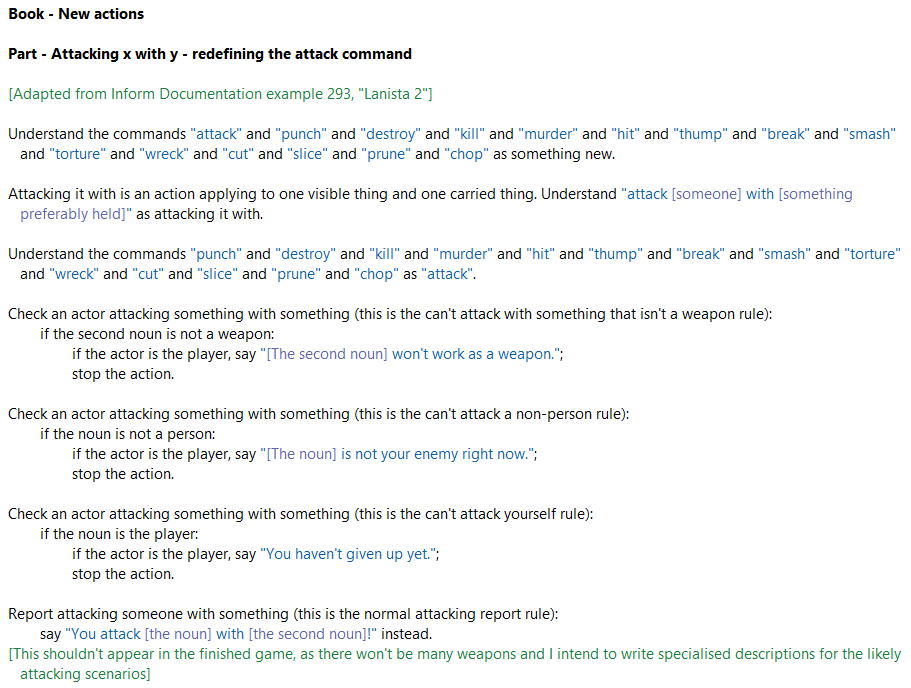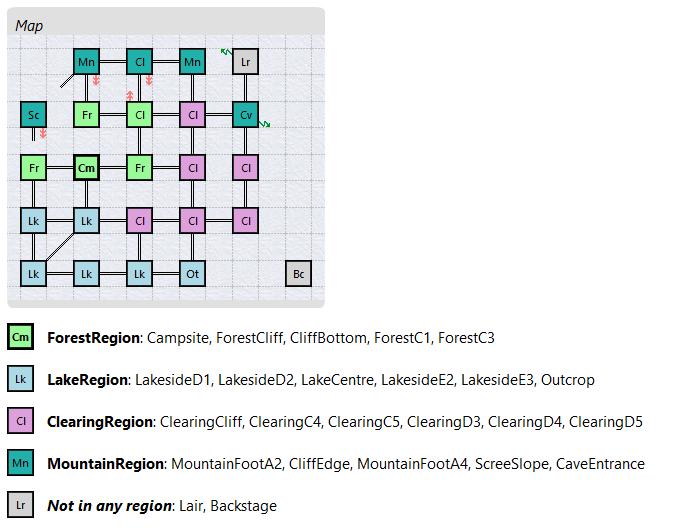(content warning: the text adventure being developed in this devlog contains textual descriptions of gore and violence)
Hello! Thanks for checking out my devlog!
I'm going to make interactive fiction for this jam. This is going to be parser-based fiction, i.e. the kind where you type instructions in (> go north, > get flask, etc). I'm tentatively planning a horror/suspense game in a wintry landscape, based on escaping or otherwise handling a monster (inspired by the wendigo in Algonquian folklore, though I expect to deviate from this). Beyond this, it's all up in the air right now!
I'll be using Inform 7 as my game engine. Inform 7 is used for most parser-based interactive fiction these days (as opposed to Twine for choice-based games). It's a very detailed engine for text adventures, and you can make something functional very quickly, so hopefully programming won't be much of a problem.
I'm aiming to have a complete and publishable text adventure ready by the end of the jam (outside of testing, which can get pretty involved with parser-based games).
It'll be a couple of days before I get going, since I'm busy for a lot of Saturday, but I wrote a Day 0 update post below to explain my thought process and some potential issues.
Good luck to everyone participating in the jam!
Update 1 - Brainstorming, coming up with a concept
The last couple of times I've entered My First Game Jam, I've had a clear idea of what I wanted to make and how it would work. This time, I'm letting the theme guide me - I have no idea what I'm going to end up with, other than knowing that I want to make a text adventure.
Here's the result of my initial brainstorming session:
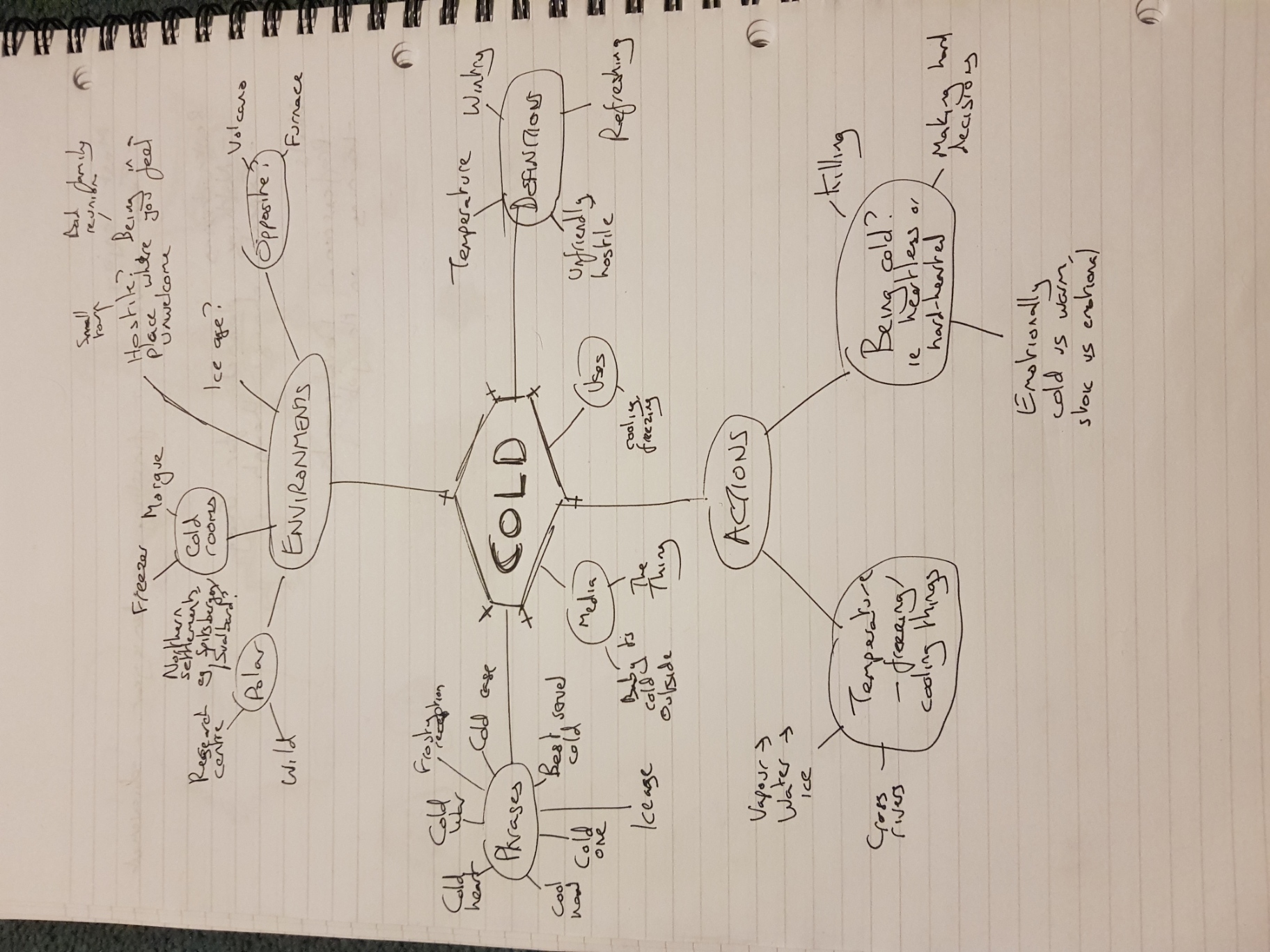
A mix of ideas - some promising, some not so promising. (Not sure what I was going to do with Baby It's Cold Outside.)
I liked the idea of folding heat into the game mechanics - freezing a river so you can walk across it, say. I have some ideas of how this could work as a fuller text adventure, with the player using heat or light or other environmental effects to change the state of environments. But to do this satisfyingly would require some very involved state tracking, and I'm not confident enough in my Inform 7 abilities to take this on. (I think Metamorphosesby Emily Short (which I haven't played myself) does something similar in interactive fiction, physically simulating the environment, and apparently there are a LOT of moving parts to make it all work.) An idea to shelve for now, perhaps!
Another idea I got hung up on was to explore a cold and barren environment, like the Antarctic. Immediately I thought of that penguin charging towards the mountains 70km away. There's an interesting narrative there, maybe, using an empty environment to explore a character who's had enough. There's not much obvious opportunity for play, though - it would all be in the writing. There's a good text adventure here, but I don't trust myself to write well enough or have enough interesting things to say to make it work. Also, the idea depresses me too much.
So if being in a cold place alone won't work for me as a game jam entry, what about being in a cold place with someone else? Or something else? This is starting to sound like a horror game or suspense game, which works for me - it reflects the Cold theme in a different way, emotional coldness or hostility. At some point here, I remembered that monsters associated with cold exist, and decided to go in that direction.
I'm tentatively looking at loosely theming a game around the wendigo, a being from Algonquian mythology. I had known this as being a beast associated with winter and cannibalism, but after doing a little more research, it holds a lot more symbolism than that. The wendigo is connected to the wider concept of destructive greed, and the destruction of other environments and cultures. Colonialism, in particular, is a wendigo which subjugated and displaced Native Americans when European empires settled on the east coast of North America. I wonder if you can also apply the wendigo on a larger scale, to the capitalist system of resource/profit extraction (of which colonialism is a key part) or the destruction of the climate by richer countries and companies.
(Unfortunately, I'm largely going off the Wikipedia page here, because I don't have direct access to a lot of the journals it cites! Other internet research seems to corroborate all this, but I don't know how reliable it is or how much of it is written by people who actually know Algonquian folklore.)
This seems like the most promising direction for a Cold-themed game so far, but of course, I'm not Algonquian. It instinctively feels like taking the wendigo away from its folkloric roots is part of the cultural colonialism that it represents. (Especially since I'm British, one of the settling cultures which displaced Native Americans.) So although I'm interested in exploring the wendigo legend as a springboard for a game, I don't feel great about helping myself to the folklore. I expect to deviate from the legend and define my own creature at some point, which will also free me up to explore different narratives and metaphors should they emerge from whatever I end up writing.
So that's where I'm at so far - a text adventure set in a cold environment, about being pursued by a wendigo or wendigo-like monster (a wendifaux). I'll need to make some big decisions about the gameplay experience - puzzly or not? How dangerous should the creature be? - but I'll start the game development by putting together a map, and I'll feel out the gameplay as I go.



